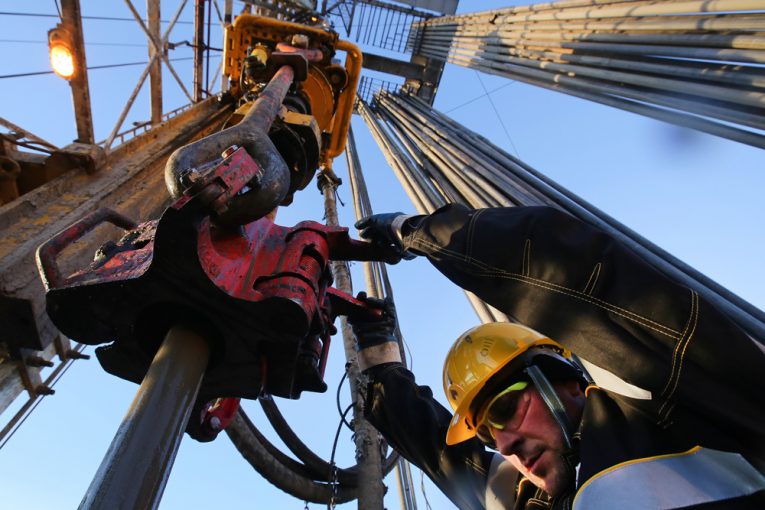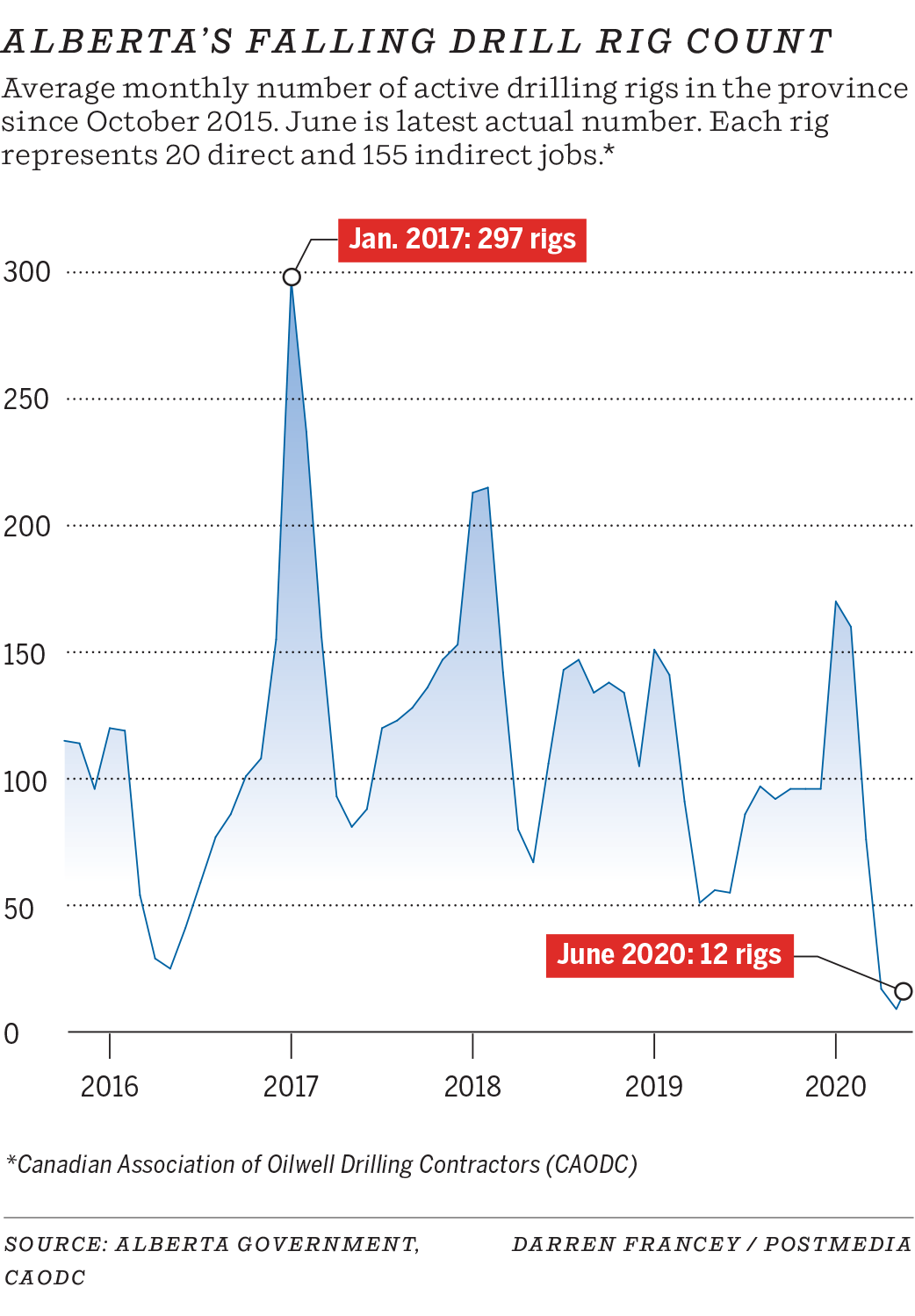
Duane Carol owns a small drilling company in Leduc and the normal spring slowdown this year came with a new twist: the industry struck a gusher of uncertainty.
Oil prices plunged to their lowest level ever in April, petroleum producers slashed spending and the COVID-19 pandemic eroded global demand for energy.
For Carol, drilling work “stopped on a dime.”
Now, the veteran oilman and his staff at DC Drilling are waiting for activity to restart, although he’s uncertain exactly when the situation will turn around as the Canadian economy begins to reactivate.
“DC Drilling has two rigs and they were both working in the first part of the year. But as soon as the pandemic hit, just with the lack of direction and uncertainty with commodity pricing, everybody shut down,” he says.
“All of our rig employees are sitting at home, just wondering like everybody else when they are going back to work — or if.”
At the halfway point of 2020, the good news for the country’s oil and gas sector is that the worst appears to be behind it. Prices for West Texas Intermediate (WTI) crude have rallied from negative US$37.63 in April to hover around US$40 a barrel in mid-June.
A reawakening of the global economy, a deal by OPEC and its allies to reduce oil production, and modest expectations for natural gas have stabilized what was an untenable situation, although it’s still highly uncertain what the rest of the year will bring.
“It was really bad when we were down among the teens on WTI (oil prices). Everybody was just circling the drain. I think this (price) response has helped a lot,” says Brian Schmidt, CEO of Tamarack Valley Energy Ltd., an oil producer.

At DC Drilling, Carol has one rig slated to begin working again in July, but notes most customers — companies that explore and produce petroleum across Western Canada — aren’t certain yet when they will resume spending to drill for oil and gas.
Budgets remain a work in progress. Producers have been battered by a punishing three months and have taken on more debt. Many are struggling to repair their balance sheets.
The visibility for Carol’s business in the second half of the year remains murky.
“Nobody really knows what is going to happen,” he says.
A similar cautious sentiment is heard across the Canadian oil and gas sector, as the industry emerges from the roughest spring on record, a period that saw a series of cuts amid punishing prices and the global pandemic.
As an essential service, the industry kept producing oil and gas during the coronavirus lockdown, with office staff largely working from home.
However, facing such low oil prices, producers shut in more than a million barrels per day of output in May. And in just a few weeks, companies chopped more than $8 billion out of this year’s capital program.
Ian Nieboer, managing director of RS Energy Group, says the recent rebound in oil markets has relieved some of the acute distress facing Canadian producers, but prices still aren’t high enough to allow for a quick recovery.
The key question going forward is the duration of these feeble prices. Nieboer doesn’t expect global oil demand to return to 2019 levels until 2024.
“There is no question a severe wound has been inflicted upon the industry in the last three months. What will really determine the degree of damage is what happens from here,” he said.
DBRS Morningstar senior vice-president of energy Victor Vallance credits many producers for acting swiftly to lower operating costs and trim capital expenditures.
Even with improved prices heading into summer, it will take time for the sector to recover from the brutal downturn.
“Companies are breathing a little sigh of relief that things have improved, but they’re certainly not out there dancing in the streets,” says Vallance.
Natural gas producers have been more optimistic recently because of improved market access options and stronger prices in Alberta.
However, Pine Cliff Energy CEO Phil Hodge notes the outlook for gas prices has moderated in recent weeks and companies will be cautious with spending.
“It is a lot of guesswork as to what the rest of the year will look like,” Hodge says.
“There are reasons to be optimistic about natural gas in the back half of the year and 2021, but it’s only cautious optimism.”
This level of uncertainty is prevalent throughout the industry.
Related
Oilfield service firms hope $1.7 billion in federal money to finance cleanup work on orphan and inactive wells will generate some work in the coming months, and that commodity prices will rise as energy demand slowly rebounds.
The group representing drillers says some producers are “kicking the tires” on potential work later this year, but today’s activity levels are at historically low levels.
“The current state of the industry is brutal,” says Mark Scholz, CEO of the Canadian Association of Oilwell Drilling Contractors
“There are a lot of unknowns out there. I’d be very shocked if anybody could tell you they know what will happen in the fourth quarter.”
You can read more of the news on source
